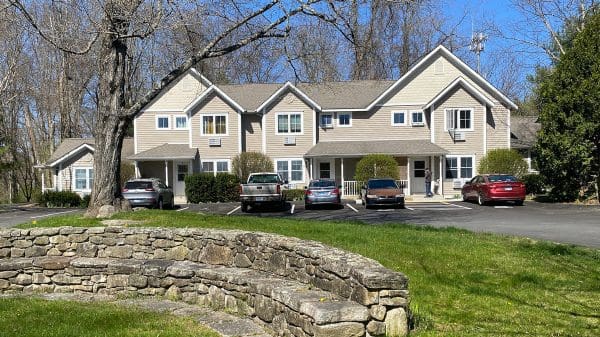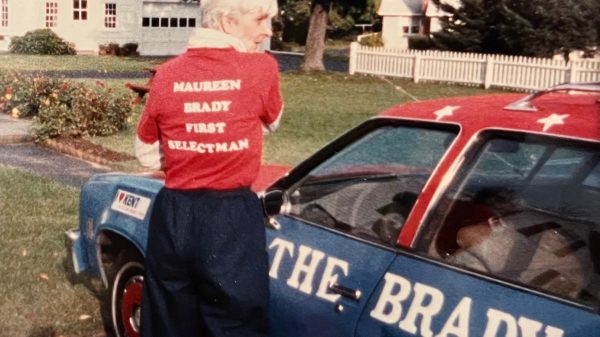KENT—The Inland Wetlands Commission dealt with two after-the-fact applications Monday night and in both instances decided that the changes made must be reversed.
Andria Budd. 422 Kent Hollow Rd., submitted an application to clean debris and tree cuttings in a wetland area. Land Use Officer Tai Kern said she had conducted a site walk of the area that had been cleared. Unsure when the work was started, she resorted to Google Earth records and discovered that dense tree cover disappeared in 2018, prior to the current ownership.
“A lot of work has occurred in a regulated area,” she said, noting that Budd amended her application to say she would be willing to do restoration work.
Member Paul Yagid said when he looked at the property, he noticed a path on the other side of the brook and questioned where it goes. Budd said they put it in so they could access all their property and that it leads to a hayfield.
Budd agreed to have a professional create a restoration plan and to have the consultant recommend whether the path should be removed. It was noted that water from that area flows toward the West Aspetuck River, which commission members termed an area of great sensitivity.
Budd said that she had considered planting rye grass in the short run to prevent erosion, but that it would not sprout unless she laid down topsoil. Members decided that nothing should be done until they are presented with a professional assessment of the area.
Yagid said, “I would much rather see a plan by a landscaper with wetlands experience. I don’t think anything will be of much benefit between now and our April meeting. As far as flooding, I don’t know what could be done to control that.”
Budd noted that some plants are beginning to sprout and IWC Chairman Lynn Werner suggested that they could be included in the proposed remedial plan.
The commission turned its attention to an after-the-fact application from Kenmont and Kenwood, LLC, on Kenmont Road. Attorney Michael Sconyers represented the corporation.
Kern said the current owners had come across a wood road through the wetlands that leads to a boat launch on North Spectacle Lake. She said no permits had been issued for the dock or the 1,800-foot-long road.
She went to Google Earth to look for data and determined that the pathway began around 2012. Later perusal by commission members showed the progress of construction through to 2018, the last map available. By 2020 it had reached the water, but it is unclear when the dock, which sits on wood poles sunk into the lakebed, was created. “It’s a fairly substantial structure,” Sconyers said. “It won’t be taken out at the end of the season.”
He said his clients were “chagrined” by the discovery of the path and dock. “It was a surprise to a number of us that the dock was even there,” he said. He predicted that there could never be construction near it because of the wetlands.
Noting that the commission would never have approved the road or dock, Werner said the commission’s options were to have it all removed or to approve it as is.
“The cure could be worse than the disease,” remarked member Yagid. “The work to do it would be extensive.”
The commission soon moved toward having the dock removed and letting “nature take its course” with the road.
A closer look on the Google Earth maps revealed the road was constructed of logs covered with dirt. “Removing the gravel would be more destructive,” Sconyers said. “The most logical thing to do is to just remove the dock. I explained to my clients that the dock will probably have to be removed.”
The Kenmont/Kenwood LLC was formerly owned by the late Lloyd Albin.
The commission decided to seek counsel about the best way to deny the application and accept a new one for remediation. They tabled any action until their April meeting.
Because the property is for sale, they also discussed ways to prevent a future owner from repeating the violation.
Kern reported that she had viewed 310 Kent Cornwall Road and found that all the work done on the site had been permitted. Referring to complaints from neighboring property owners, she found the use of the property “seemed pretty intense,” but said it was not responsible for failing trees on a neighboring property. Nor did she find any negative impact on 320 Kent Cornwall Road.
“It seems free and clear of issues, but the commission was spot on in not letting anything else happen,” she said.




























